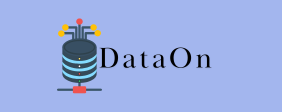Sharing information and communicating properly with employees is crucial to avoiding crises in an organization. Properly aligning employees on communication processes during a crisis allows all stakeholders to participate in managing it.
Stop Scheduled Posts
Suspending scheduled posts should be a top priority in any crisis situation. This prevents accidental insensitivity or reputational damage to content in the future. This practice responds quickly to the current crisis and ensures that management efforts have a good chance of saving the brand’s reputation. Therefore, it is one of the most important measures.
Social Media Setup Guide
To prevent internal crises, a company needs to have comprehensive social media policies that outline acceptable business practices. This could involve copyright, privacy, brand personality, and how company images should be handled. Such restrictions ensure that employees behave in a consistent manner and that no one person has the potential to cause a crisis.
Crisis Communications Planning
Therefore, it is important to ensure preparation when handling mint data a crisis, guided by a carefully structured crisis communications plan. This plan includes details on individual responsibilities, internal and external communication processes, steps for drafting messages, and criteria for selecting spokespersons or other key representatives. Such an approach allows for quick and well-coordinated actions when responding to a crisis.
Responding to Social Media Users
Actively engaging with social media users is essential when responding to a crisis. Responding quickly, calmly, avoiding engaging in discussions with extremist elements, and providing regular updates are essential, as how to create a semantic core for a website? a beginner’s guide they ensure transparency of actions and build trust while minimizing escalation.
Crisis Response Assessment
Post-crisis review of the crisis response is essential to improve future actions. This may include an in-depth analysis of the event, interviews with a variety of individuals, including employees, stakeholders and china data others, and reflection on strengths and weaknesses. As a result, such an approach ensures continuous improvement and preparation for future crisis situations.
